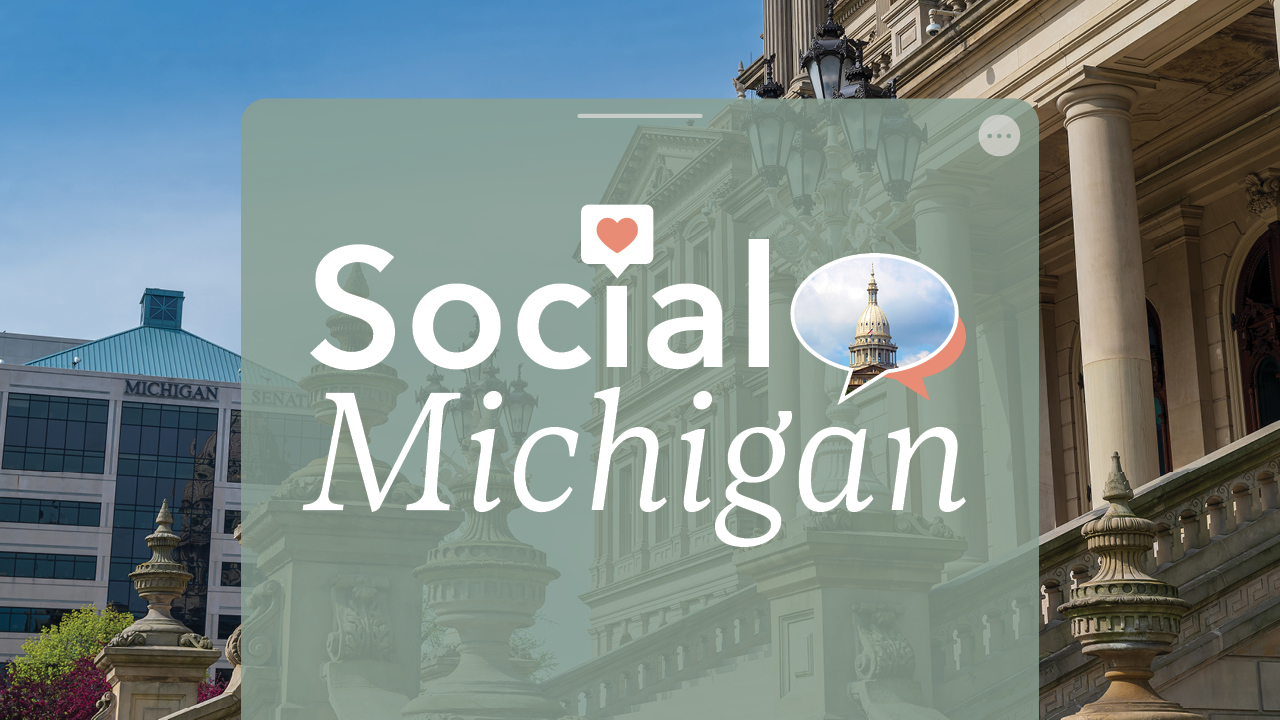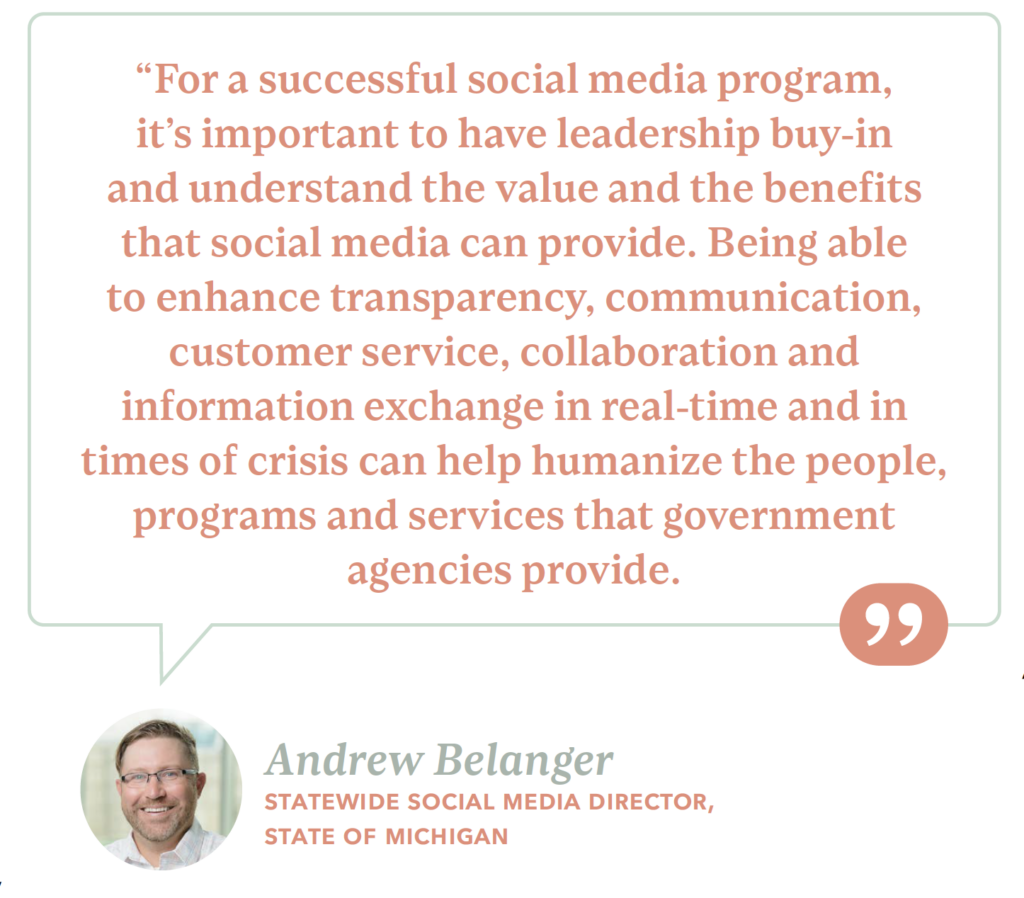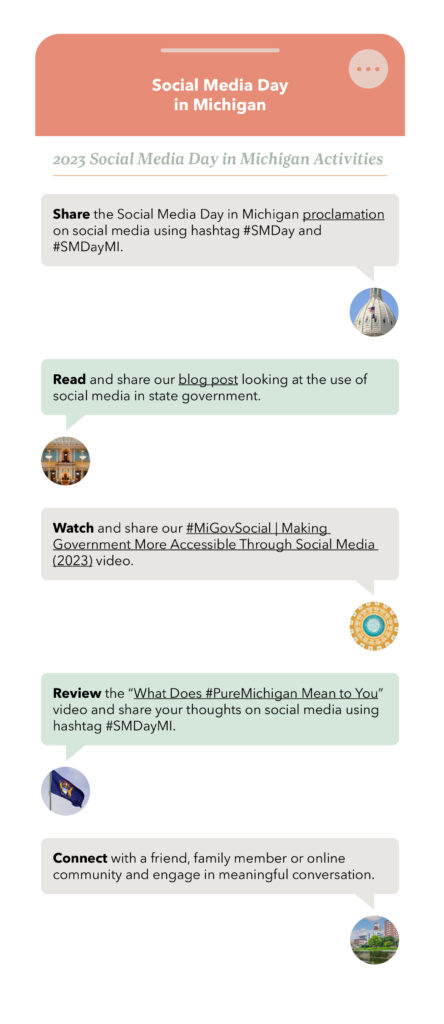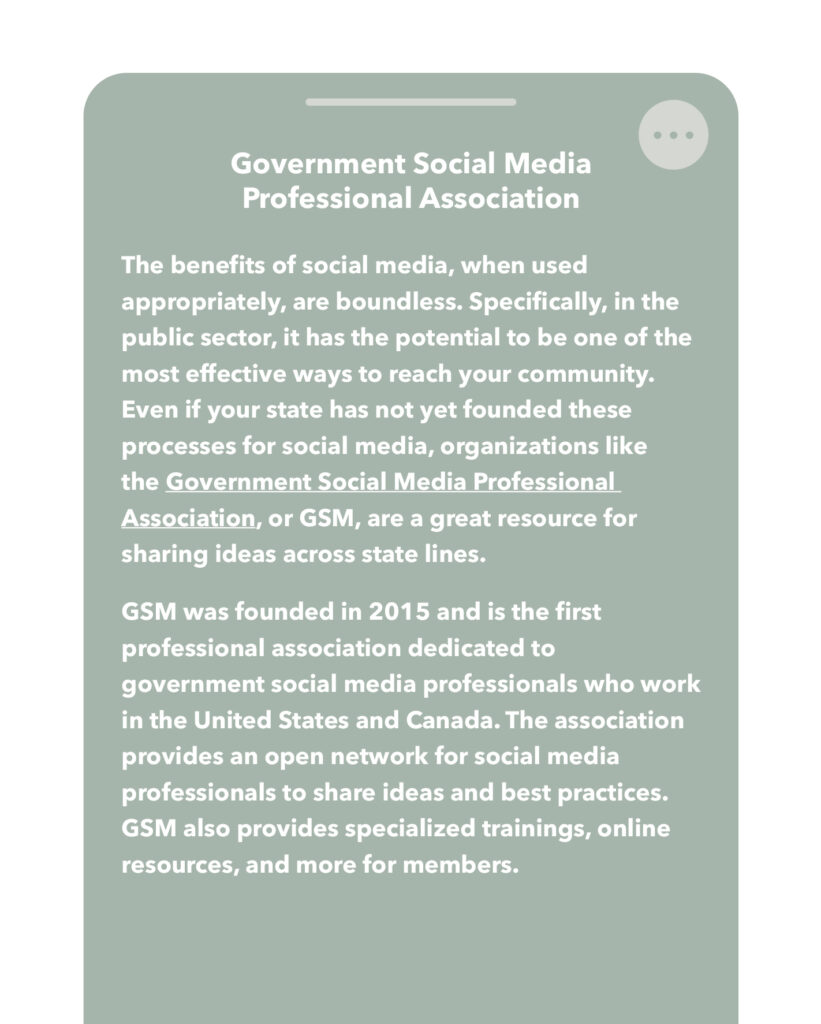
Facing social media’s rapid advancement, the Great Lakes state sets the tone with support from a multitude of resources and strategies
By Trey Delida
It’s safe to say that social media has impacted nearly everyone’s day-to-day lives, both personally and professionally. This decades old technology — now dating back to 1997 — has permanently altered the way we communicate, share and receive information.
As rapid advancements in the field continue, government organizations remain in pursuit of fully understanding social media, its ever-changing nature and all it has to offer, while simultaneously trying to reap the benefits of its dominance in society.
In 2023, there are approximately 308 million social media users in the United States alone. So, how do state governments intend to continue navigating this growing, dynamic juggernaut?
When looking at the states, there is one that seems to have its finger on the pulse. Boasting millions of followers across its platforms, the state of Michigan’s award-winning social media program utilizes a plethora of tools to engage, support and provide processes for staff managing social media accounts across its many state departments.
Michigan was ahead of the curb when it came to embracing social media, even adopting a statewide “Social Media Day,” celebrated annually on June 30. The Great Lakes state was one of the first states to adopt a centralized social media strategy for its executive branch departments, which now supports more than 300 staff managing more than 800 state-affiliated accounts across 11 different platforms.
According to Andrew Belanger, statewide social media director and digital content administrator with the state of Michigan, the state’s centralized governance strategy for social media has been key to fostering a proactive statewide digital footprint.
“We believe governance is an important element to a strong and proactive social media program,” Belanger said. “Over the years we have developed numerous statewide resources that support our program and provide guidance to our agency teams as they manage their accounts.”
Through such resources, Belanger’s team established a statewide social media standard, developed social media guidelines and best practices, hosted routine trainings, and standardized many processes across the state that were once decentralized across agencies.
“From a centralized governance perspective, our program resources and processes have been helpful in establishing a baseline for our staff and our activities on social media,” Belanger said. “We reference these resources daily as our teams share content and engage with residents across the state, nation and globe.”

Michigan was one of the first to establish statewide social media policies, issuing its “Social Media Standard” in 2011. That particular document created guidelines for any state-affiliated account and established best practices for creating and using state-affiliated social media accounts.
The standard outlines everything state social media professionals may need, including how to request an account, properly deactivate or close an account, and how to recognize content that may be at risk for violating community and state guidelines.
“In addition to our social media standard, we created a social media guidelines book containing things that are subject to change based on platform functionality and best practice,” Belanger said. “The guidelines book addresses and outlines processes, shares tips and tricks and best practices, and helps guide staff as they manage their accounts and share content.”
Belanger added the state also developed statewide social media community guidelines and a customer use policy that identifies criteria for content moderation. The criteria are used for staff who are monitoring and engaging with user-generated content that may potentially violate state policy or the terms and conditions of a specific platform.
“Standardizing our community guidelines and customer use policy across agencies was a game changer for our agencies,” Belanger stated. “Independent of where staff work and what programs and services they support, our application of consistent statewide guidelines, and criteria, helps promote a unified user experience as users reach out and engage with us across agencies, platforms and accounts.”
Since 2016, Belanger has overseen the state’s entire social media program, including branding, best practices, training and enforcing statewide social media policies and standards. His support of government social media has led to him being featured in publications like USA Today, the New York Times, the Washington Post, U.S. News World & Report and more.
One of Belanger’s first projects was to establish a social media governance board. Now known as Michigan’s Statewide Social Media Governance Council, the council, comprised of members from all state departments and agencies, support him in guiding policy, branding, best practice, education and scaling of social media for the state.
“We found that it’s really important to have that regular touchpoint with all of our teams so they can provide feedback and suggestions on policy, training and best practice,” Belanger said. “During our council meetings, we also have dedicated time set aside to provide support and discuss content collaboration, and how we can best partner on interagency campaigns and high-level messaging coming out of the governor’s office.”

As part of Michigan’s effort to provide structure and support for agencies across the state, they are regularly reviewing and updating their approach to ensure they adhere to industry best practices. They continually monitor policies, standards and practices in other states, the federal government, and those of community partners and local governments.
“We are always looking for opportunities to improve our standards, guidelines and strategies to best meet our business needs and the needs of our constituents,” Belanger said. “Through the council, our collaborative approach to social governance, our commitment to service delivery and our focus continues to be on our users. We seek to provide users with the information they need on the platforms where they feel most comfortable.”
With streamlined processes in place, partnered with open lines of communication, Michigan maintains consistency with its digital footprint while ensuring the people who are running these social media accounts are equipped with the information, they need to create successful, on-brand content.
Consistent messaging is essential for public sector institutions. In a world where news can break to millions of people at any given moment, it is important for states to be able to tell their story and be able to share dependable information in real-time.
Social media is used as a daily source of news by 50% of Gen Z, 44% of millennials, 39% of Generation X and 24% of Boomers, according to a Morning Consult poll published in August 2022 and later reported by Statista. That same source reported that U.S. Congress members were utilizing social platforms heavily, sending out 477,586 posts on X, formerly Twitter, in 2021.
“Social media has played an important role in government communications over the last decade — we’ve seen it,” Belanger said. “Now, more than ever, we see the immediate impact it can have in disseminating information in real time. Whether it’s in times of crisis, a natural disaster, a public safety situation or public health emergency, social media will continue to play an important role in government communications.”
Belanger credits state leadership for recognizing social media’s value, which allowed Michigan to become one of the first states to embrace social media and roll out their policies.
“For a successful social media program, it’s important to have leadership buy-in and understand the value and the benefits that social media can provide,” Belanger said. “Being able to enhance transparency, communication, customer service, collaboration and information exchange in real-time and in times of crisis can help humanize the people, programs and services that government agencies provide.”
When it comes to developing these processes, Belanger said it starts by bringing people together, asking questions and sharing information.
“If you’re not having conversations with your team, other agencies or departments, start having them,” Belanger said. “Start by asking questions: What are other agencies doing? What do they have in place? How can we partner and collaborate?”
These questions can be a starting point for reviewing or updating your agency’s social media resources. As Belanger put it, social media is here and it isn’t going away anytime soon. Just like organizations and businesses across the globe, there is potential for governments to leverage this technology to connect and better serve their public.
“The platforms and the strategies we use may change, but the idea of connecting and exchanging information, engaging with our constituents, is not going to go away,” Belanger said. “We need to adapt and evolve as the social landscape continues to change.”



